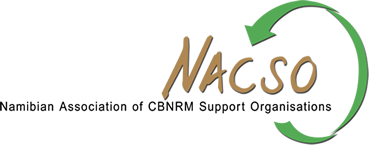
FIVE countries gathered at the northeastern tip of Namibia in the Caprivi region today to officially launch the Kavango Zambezi Transfrontier Conservation Area (KAZA TFCA). For many, the launch signifies the beginning of introducing the world to the tourism gem which is the 444 000 square kilometer biodiversity hotspot that extends across the borders of the five countries.
The area is now ready to unveil it’s uniqueness in terms of communities which thrive by protecting the wilderness that surround them and thereby ensuring the continuity of the multiple cultures, heritages and shared bio-diversity across borders.
In essence, KAZA is a symbolic step to strip away man made fences and once again allow animals to roam freely, in an environment where communities and countries have made commitments towards conservation through transboundary management of shared resources. KAZA is seen by many as a visionary effort to promote conservation and tourism through an integrated development approach that will lead to social upliftment of resident communities while contributing to environmental resiliency of some of southern Africa’s most treasured and pristine biodiversity assets.
The launch marked the beginning of a unique transfrontier partnership between Namibia, Angola, Zambia, Zimbabwe and Botswana. To date it is the largest transfrontier protected area in the world, covering an area almost the size of Sweden.
Members of the communities from all countries joined the proceedings, alongside senior chiefs, community members, government officials and the various organisation, such as WWF, which have partnered with the trans-frontier conservation project to inject technical know how, finances and support.
KAZA is situated in the Kavango and Zambezi River basins. The area is a bio-diversity hotspot and home to thousands of community members whose lives depend on their natural surroundings.
At the launch, Dr Tomaz Augusto Salamáo, Executive Secretary of the Southern African Development Community (SADC), said that the KAZA TFCA is “a commendable achievement and a door to further milestones that have the potential to change the lives of communities who live in the area for the better”.
The KAZA area includes multiple land uses, including more than 40 national parks, game reserves, forests reserves, conservancies, tourism concessions and more.
Salamáo noted that KAZA is a “true symbol of regional integration”. It is a “development model that integrates poverty reduction, sustainable management of natural resources … and transforms them into the improvement of our human capital and into wealth creation”.
For the five partner countries, one of the multitude of issues that have to be looked at in order to fine-tune the workings within KAZA, is the process of harmonizing policies on natural resources of the countries.
Minister of Environment, Wildlife and Tourism of Botswana, Kitso Mokaila, urged his partners in KAZA to work on the harmonization process in order to “deal effectively with key operational issues that will enhance effective trans-boundary conservation”.
The issues which affect the countries across KAZA include trans-boundary wildlife corridors, joint transboundary law enforcement operations, joint wildlife surveys and the promotion of compatible land use practices. Moreover, Mokaila underlined that which all partners in the KAZA project agree on: “It is our strong conviction that conservation of our natural resources must produce tangible benefits to the communities”.
Namibia’s Minister of Environment and Tourism, Netumbo Nandi-Ndaitwah said that the environment plays a critical role in the upliftment of rural communities, as “natural resources are the main drivers of rural economic growth and development”.
Nandi-Ndaitwah added that the KAZA TFCA is “blessed” with an abundance of unique plants and animals, wetland areas, beautiful natural landscapes and diverse cultures “which when combined have the potential to help conservation and ultimately to carry significant economic rewards for the local community and our respective countries at large”.
On a final note, Francis Nhema, Minister of Environment and Natural Resources of Zimbabwe, said that with the launch of KAZA “we bring respect, hope and harmony to wildlife”. But, he added, the benefits must also go to the communities.
Ingolf Dietrich, the Director for Southern Africa for the German Ministry of Economic Cooperation and Development said that as part of the strong international cooperation infusing the development of KAZA was the “pulling together” of civil society. In this case, the WWF and the Peace Parks Foundation have acted and will continue to operate as “strong civil society partners” to the five partner countries.
Dietrich added that that ultimately KAZA is a “successful example of international cooperation for sustainable development”. He said that if five countries “decide to jointly protect their natural treasures and cooperate closely” this is a guarantee for “peace and stability for the whole region”.
